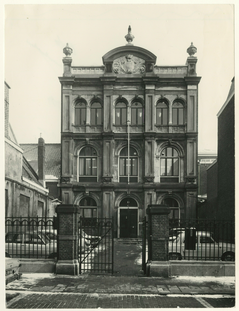
The Hague is not a port city, so you won't find VOC warehouses and other heritage of the trading companies here. But the administrations of the VOC and WIC (this should be written out in the translations and not with abbreviations, otherwise it will be incomprehensible to many visitors) did regularly travel from Amsterdam to the court city to meet. After all, trade was also political. The VOC was allowed to fight wars, conclude treaties and build forts, matters that had to be coordinated here with the States General and the stadholder of the Republic of the United Provinces. These meetings were called 'besogneren'. From 1690, the VOC used a building at 38 Bleijenburg, bought from Koenraad van Beuningen, former mayor of Amsterdam and former VOC administrator.
The 'Hague besogne' met here to read and answer correspondence from the East Indies. It was only about business mail, so not issues about the treatment of the local population, but for example about the number of ships to be built. Thus a colonial bureaucracy emerged at this place in The Hague, deciding on colonial matters at a great distance from the East Indies and with long delays.
After the VOC's bankruptcy, the Asian Council - later the Council of the Indies. held office here. After that, the building served as the Poorhouse for a while. In 1873 it was demolished and a new building was built on this site, the former Girls' High School you are now standing in front of. In an annex came the gymnasium, and it was there that a final memento of the VOC in The Hague was found in 1938: a 17th-century timepiece commissioned by the VOC and made by Amsterdam clockmaker Claudy Fremy.